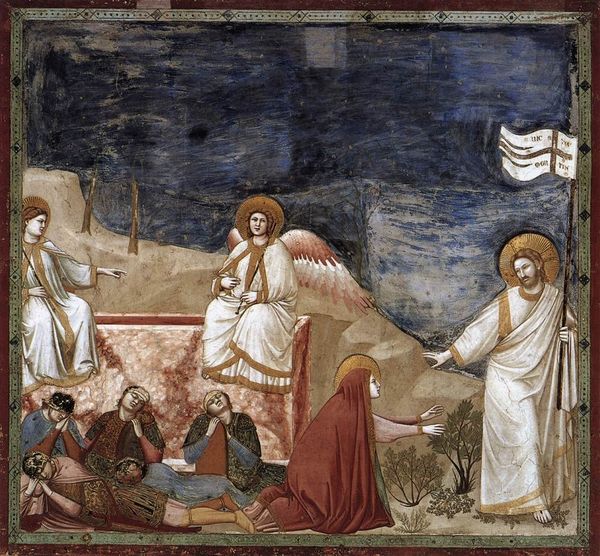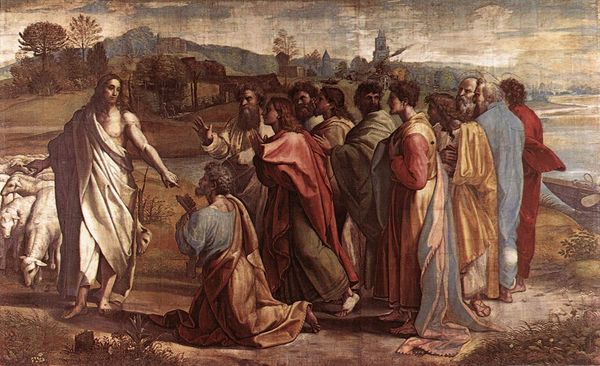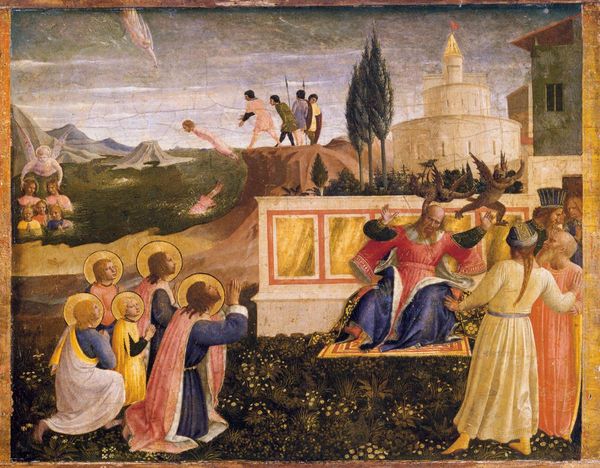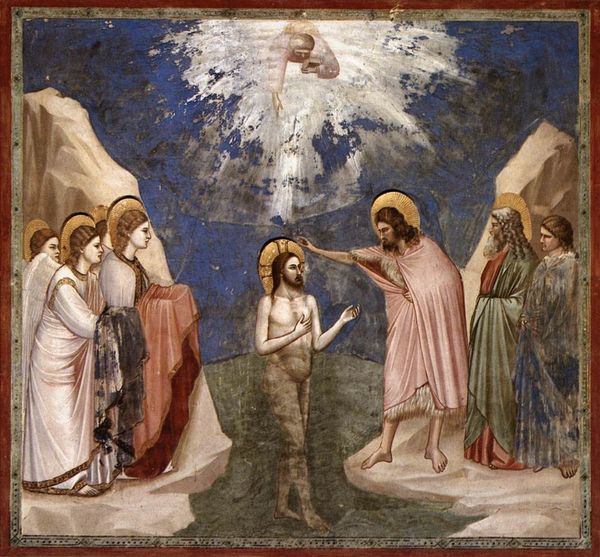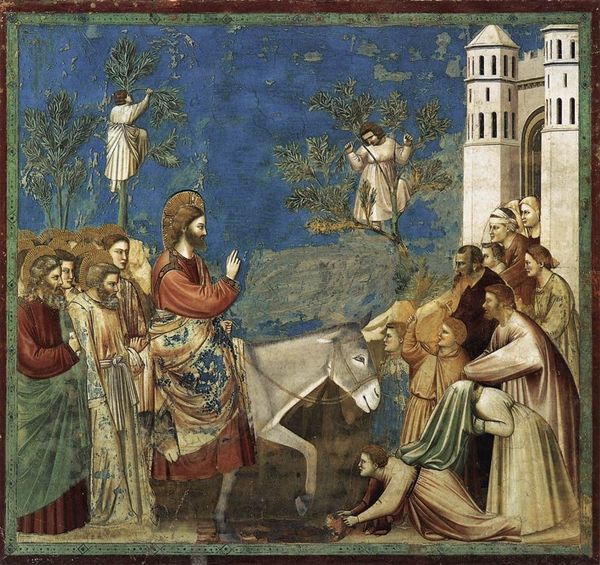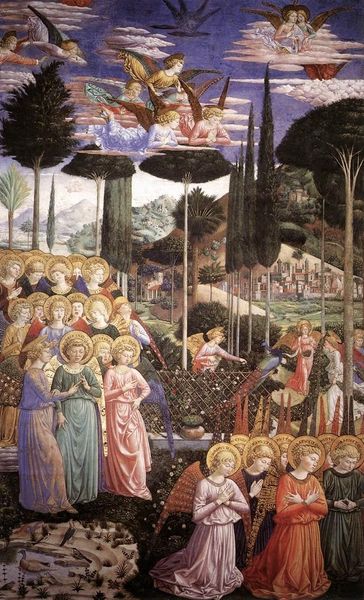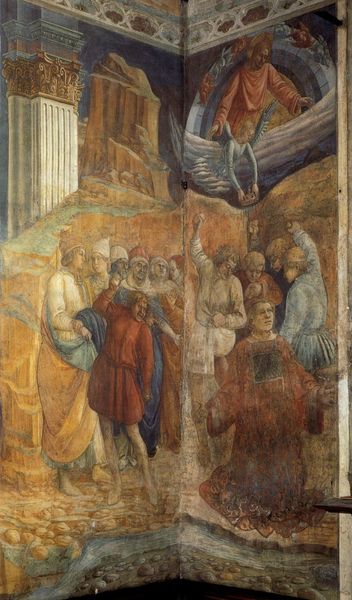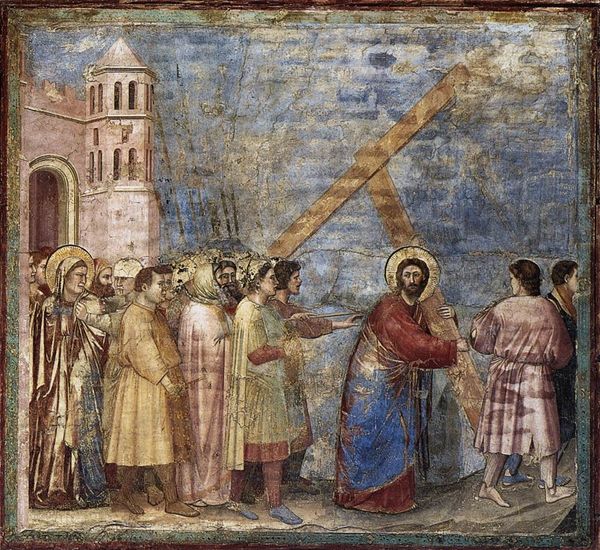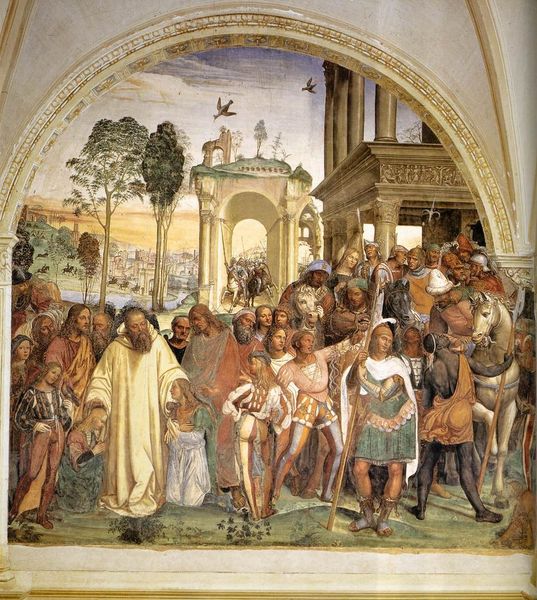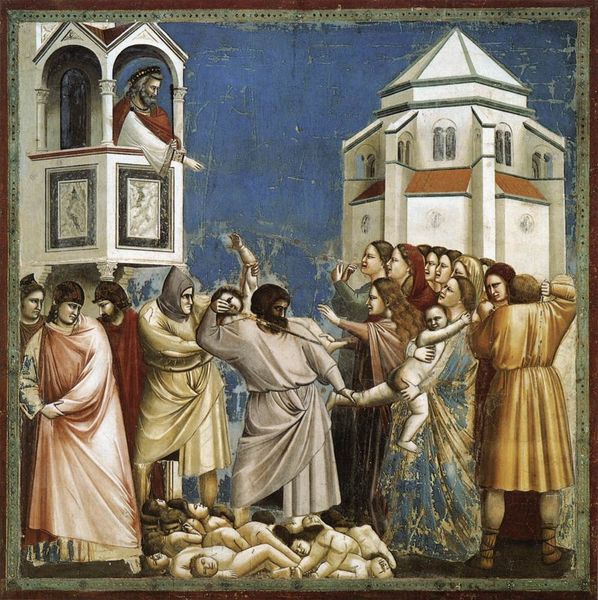
painting, fresco
#
byzantine-art
#
medieval
#
narrative-art
#
painting
#
holy-places
#
figuration
#
fresco
#
oil painting
#
jesus-christ
#
naive art
#
christianity
#
history-painting
#
italian-renaissance
#
portrait art
Dimensions: 200 x 185 cm
Copyright: Public domain
Curator: Here we have Giotto's "The Arrest of Christ," or "Kiss of Judas," a fresco created around 1306 as part of his cycle in the Scrovegni Chapel. The piece captures the betrayal with an arresting simplicity. What strikes you first? Editor: It's the gold! The robes shimmer like honey, and halos float, luminous against the darkening blue of the sky. And those faces! Each a study in impending doom. Talk about tension hanging heavy in the air! Curator: Indeed. Giotto's innovative use of fresco here emphasizes spatial depth and naturalism, departing from the Byzantine style. Note the positioning of Judas and Christ—their embrace forms a compositional knot at the painting's heart, with Judas’s yellow robe signaling deceit. Editor: He’s snuggling in! Like he is whispering sweet nothings. That contrast, juxtaposing tenderness with absolute betrayal is striking. Also, I have a question; what's up with the weaponary? Those look more like sticks and torches. Was it BYOW back then? Curator: The raised weapons create a visual echo, reinforcing the volatile situation. But look at the gazes: the accusation in Christ’s eyes, versus Judas’s averted gaze, highlights their individual moral standing. Also the arrangement directs the viewer into understanding the sequence of the Passion. Editor: Giotto has bottled lightning here. A crucial, gut-wrenching moment captured forever in vibrant color. So immediate, yet strangely removed in its time. Curator: Agreed. Its profound depiction of human emotion and skillful articulation of form secures its place as a keystone in the move towards the Italian Renaissance. The visual clarity married with potent emotion creates enduring resonance. Editor: Exactly. It is really something to imagine it with those chapel lights glimmering all that time ago. A masterpiece indeed. Curator: Indeed. A perfect example of Giotto’s pioneering role, as a foundation for those that followed in his steps.
Comments
No comments
Be the first to comment and join the conversation on the ultimate creative platform.

